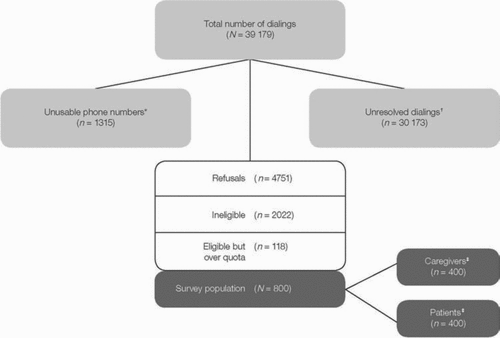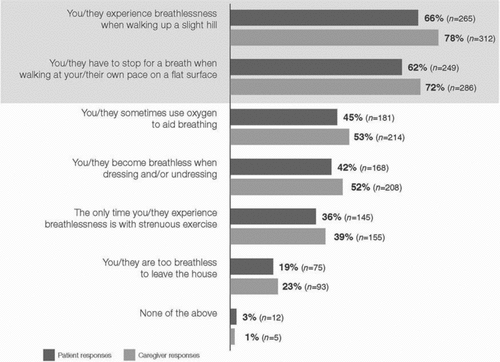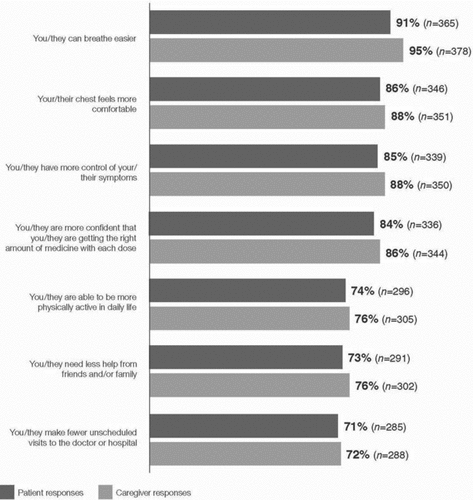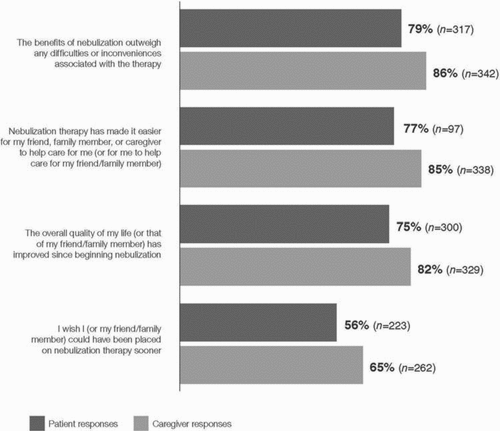Figures & data
Figure 1. Sample Selection*: Disconnected, fax number, business phone, language barrier, wrong number; †: No answer, busy signal, answering machine, respondent not available; ‡: Patients were included in the survey and subsequently interviewed if they met all of the following criteria: adults ≥ 18 years of age; self-reported COPD, chronic bronchitis, and/or emphysema (each condition had to be physician-diagnosed); and currently receiving nebulization treatment for their breathing condition. Patients who did not meet these criteria were excluded from the survey; there were no additional exclusion criteria. The inclusion and exclusion criteria for caregivers of patients with COPD were identical to those for patients; however, in the caregiver's case, they were responding on behalf of the person for whom they cared.

Table 1 Demographicsa
Table 2. Concomitant therapiesa
Figure 2. Assessment of COPD. Patient question: Which of the following statements accurately describes your current condition? Caregiver question: Which of the following statements accurately describes this patient's current condition? Percentages are based on rounding and reflect only patients who responded to the given question. COPD: chronic obstructive pulmonary disease.

Figure 3. Benefits associated with nebulizer use. Patient question: For each statement below, please tell me whether you agree or disagree, given your own experiences with a breathing disorder. As a result of using a nebulizer… Caregiver question: For each statement below, please tell me whether you agree or disagree, given your own experience as a caregiver. As a result of using a nebulizer… Percentages are based on rounding and reflect only patients who responded to the given statement.

Figure 4. General perceptions of nebulization. Patient/Caregiver question: For each statement below, please tell me whether you agree or disagree. Percentages are based on rounding and reflect only patients who responded to the given statement.

Table 3. Primary disadvantages of nebulization therapy
